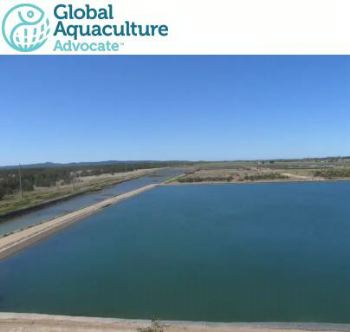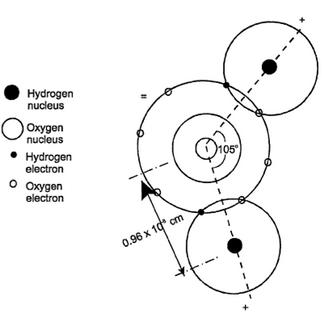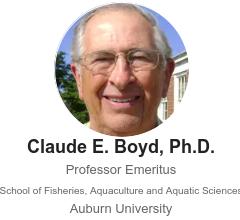|

Image: GAA
What’s the difference between biological and chemical oxygen demand?
 UNITED STATES
UNITED STATES
Thursday, June 10, 2021, 15:30 (GMT + 9)
The following is an excerpt from an article published by the Global Aquaculture Advocate:
Prof. Boyd discusses BOD and COD and explains the importance of these water quality parameters
The terms BOD and COD are often tossed around in discussions of aquaculture water quality, and an explanation of the meanings, differences, and purposes of these two variables should be helpful. The BOD stands for the biological oxygen demand or biochemical oxygen demand – take your pick as they are used interchangeably. The COD is short for the chemical oxygen demand.
Biological oxygen demand
BOD is the amount of dissolved oxygen consumed by a water sample (often diluted) that is confined in a BOD bottle, and held in an incubator in the dark at 20 degrees-C. The sample is held in the dark to avoid dissolved oxygen production by phytoplankton photosynthesis during incubation. The dissolved oxygen loss may be measured over any desired length of time, but most commonly for five days –hence, the five-day biochemical oxygen demand (BOD5).
 The dissolved oxygen loss in the bottle results from respiration of all the organisms in the water sample including the bacteria that decompose dissolved and suspended organic matter. Of course, if there is ammonia nitrogen in the sample, biological nitrification also can consume oxygen. The dissolved oxygen loss in the bottle results from respiration of all the organisms in the water sample including the bacteria that decompose dissolved and suspended organic matter. Of course, if there is ammonia nitrogen in the sample, biological nitrification also can consume oxygen.
There must be dissolved oxygen remaining in the BOD bottle at the end of incubation or the dissolved oxygen (BOD) cannot be calculated. A 20 degrees-C, freshwater contains only 9.08 mg per liter at air saturation, and a higher BOD cannot be measured in an undiluted sample. Dilution results in fewer microorganisms, so a bacterial seed is added in the dilution water for samples that are diluted more than three- or four-fold to avoid a delay in bacteria decomposition. Samples of municipal, meat processing, and industrial wastewaters must be greatly diluted to prevent depletion of dissolved oxygen during the BOD test. Aquaculture effluent samples may not require dilution, and few need to be diluted more than three or four times.
The nitrifying bacterial population usually needs more than five days to begin oxidizing ammonia nitrogen in highly diluted samples. In BOD5 tests on samples diluted more than three or four times, nitrification usually does not contribute to BOD5. A nitrification inhibitor can be placed in samples to stop nitrification entirely. Unless a nitrification inhibitor is added in an undiluted sample or a sample is only diluted a few times, nitrification will occur during incubation.
The BOD may be reported as carbonaceous BOD (CBOD) for highly diluted samples or in samples in which nitrification was inhibited. The difference in BOD between portions of a sample incubated with and without nitrification inhibition is the nitrogen oxygen demand (NOD). The NOD also can be estimated from the total ammonia nitrogen concentration in milligrams per liter (same as parts per million) multiplied by 4.57. Aquaculture effluent samples are seldom greatly diluted, and nitrification inhibition is not commonly done. The NOD in a pond with 5 mg per liter of total ammonia nitrogen would be 22.8 mg per liter. Ammonia nitrogen often makes up a significant portion of the total BOD in samples from aquaculture facilities.
 The purpose of the BOD is to provide an estimate of the amount of dissolved oxygen that will be required to oxidize the BOD load in a wastewater discharged into a receiving water body. For example, if the BOD5concentration of an effluent is 20 grams per cubic meter (20 mg/L) and 1,000 cubic meters per day of effluent is discharged, the BOD5 load is equal to 20 kg of dissolved oxygen per day. The purpose of the BOD is to provide an estimate of the amount of dissolved oxygen that will be required to oxidize the BOD load in a wastewater discharged into a receiving water body. For example, if the BOD5concentration of an effluent is 20 grams per cubic meter (20 mg/L) and 1,000 cubic meters per day of effluent is discharged, the BOD5 load is equal to 20 kg of dissolved oxygen per day.
It is possible to determine oxygen re-aeration rates for streams and some other water bodies. Data on reaeration rate are used in mathematical models to estimate permissible daily BOD5 loads for avoiding excessive low dissolved oxygen concentration in receiving water bodies.
The BOD5 is valuable as an indicator of the pollutional strength of effluents from aquaculture farms. Typical BOD5 concentrations in aquaculture effluents are between 5 and 30 mg per liter, but both lower and higher concentrations may occur.
Chemical oxygen demand
The COD is the oxygen equivalent of the amount of potassium dichromate consumed during the complete oxidation of organic matter in an acidified water sample during two-hour of boiling in a reflux apparatus to avoid loss of water by evaporation. The COD is a quicker method of estimating the oxygen demand of a sample.
The COD actually represents the ultimate BOD (BODu) or the amount of dissolved oxygen to completely oxidize the organic matter in a sample, and the COD will always exceed BOD5. The BOD5 concentration typically is around 65 percent of the COD concentration. (continues...)
Author: Claude E. Boyd, Ph. D. / Global Aquaculture Advocate | Read the full article by clicking de link here
[email protected]
www.seafood.media
|



